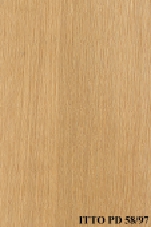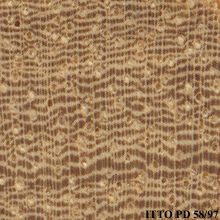
MANIL, OSSOL, MACHARE (Symphonia globulifera)
Trade Name
Manil, Ossol, Machare
Scientific Name
Symphonia globulifera L. f.
Family
CLUSIACEAE
Common Names
Machare (Colombia); Azufre (Colombia); Brea Amarilla (Bolivia); Laurel De Monte (Bolivia); Azufre (Bolivia); Zaputi (Ecuador); Brea Caspi (Peru); Peramancillo (Venezuela); Maníi (Guyana); Yellowmangur (Trinidad & Tobago); Bacuri-Bravo (Brazil); Bacuri-Acu (Brazil); Axuá (Brazil); Anani-Da-Mata (Brazil); Anani (Brazil); Wayepu; Waika; Perman; Ossol (Gabon); Okilolo; Nom Ouie; Nianga Nianga (Congo); Mataki; Matakki (Surinam); Manni; Manil; Machare (Ecuador); Leche Amarilla; Chewstick (Honduras); Boar Wood (United Kingdom); Barillo (Honduras); Azufre (Peru); Anani; Ahoke; Palo Azufre (Peru); Boarwood (United Kingdom); Yellow Mangue (Trinidad & Tobago); Waika Chewstick; Matakkie; Peraman; Sambogum; Manniballi; Mani; Hog Gum; Doctor Gum; Cerillo; Bois Cochon; Buck Wax Tree; Boar Gum (United Kingdom); Anamy
Scientific Name Synonyms
Symphonia gabonensis (Vesque) Pierre; Moronobea coccinea Aubl.
Description Of The Tree
Botanical Description
The size of the mature tree is reported to be small to medium, attaining heights of 35 m, and trunk diameters of about 40 cm, with a commercial length usually up to 14 m. It often develops stilt roots with numerous elbow buttresses. It presents abundant y
Natural Habitat
Symphonia globulifera is a gregarious species found in the primary and secondary forests of tropical America. It is reported to prefer swamps and marshy areas up to 1,000 m of altitude. In Brazil it is found in the swampy areas, or igapós, of the Atlantic. In Africa Symphonia globulifera is common in rain forest and swampy places, but also tends to occur in mixed, dry formations.
Natural Distribution
This species is found in West Africa and America, where it is common in the tropical rainforests.
Non Timber Uses
The bark contains a yellowish resin used for medical purposes.
Wood Identification
Anatomic Description Of Wood
Wood diffuse porous. Vessels solitary and in short radial multiples. Occasionally tangential diameter of vessel lumina 200 micras or more. Occasionally vessels with colored deposits. Tyloses common. Vessels per mm2 less than 6 (rare). Simple perforation plates. Axial parenchyma apparent with the naked eye. Axial parenchyma confluent. Axial parenchyma in discontinuous tangential lines. Axial parenchyma oblique and/or sinuous. Occasionally pith fleck. Prismatic crystals in non-chambered axial parenchyma cells. 3 to 4 ce 4 to 10 rays per mm (medium). Rays 1 to 4 seriate. Occasionally rays exclusively uniseriate. Occasionally prismatic crystals in the ray cells. Homogeneous rays and/or sub-homogeneous rays (all ray cells procumbent). Fibers with simple to minutely bordered pits.
-
 Wood Macro Photo Tangential Plane
Wood Macro Photo Tangential Plane
-
 Wood Micro Photo Of Transversal Section
Wood Micro Photo Of Transversal Section
Availability
Cites Status
Unrestricted
General Wood Description
Odor
Freshly cut wood has an unpleasant smell which fades after drying.
Color
The sapwood is clearly differentiated. The heartwood is pale yellowish brown in color.
COLOR INDEX (1=Black, 7=Light yellow,white)
5
Grain
Straight or interlocked grain are reported for this species.
Texture
The wood is coarse textured.
Luster
The wood luster is described as medium.
Natural Durability
The heartwood is durable to decay, but it is easily attacked by termites.
Natural durability index (1= Very high durability, 7=Vey low durability)
3
Internal Growth Stresses
No growth stresses are reported in this species.
Silica Content
Silica Content: A silica content of 0.2 % is reported for this species. Silica Value: 0.2
Resistance To Impregnation
It is highly resistant to preservative treatments.
Wood Physical Properties
Basic Density or Specific Gravity (O.D. weight/vol. green) (g/cm³)
0.65
Air-dry Density (Weight and volume at 12%MC) (g/cm³)
0.73
Total shrinkage Tangential (Saturated to 0%MC) (%)
9.6
Total shrinkage Radial (Saturated to 0%MC) (%)
4.8
Drying Defects
Ease of Drying: The rate of drying is reported to be slow to moderate. Drying Defects: Risk of checking is reported.
Recommended Dry Kiln Schedule
UK-C; BR-B; US-T3-C2; FR-8
Dimensional stability ratio (Total Tangential Shrinkage %/Total Radial Shrinkage %)
2.0
Actual Dry Kiln Program
http://itto.git.grav-dev.com/wp-content/uploads/2015/08/KD_British_ENG.pdf
http://itto.git.grav-dev.com/wp-content/uploads/2015/08/KD_Brazilian1.pdf
http://itto.git.grav-dev.com/wp-content/uploads/2015/08/KD_USA_ENG.pdf
http://itto.git.grav-dev.com/wp-content/uploads/2015/09/KD_French.pdf
Wood Chemical Properties
Wood Mechanical Properties
Bending Strength (MOR),12%MC (kgf/cm²)
1379
Stiffness (MOE) 12%MC (kgf/cm²)
133071
Compression parallel to fiber 12%MC (kgf/cm²)
604
Compression perpendicular to fiber 12%MC (kgf/cm²)
73
Shear strength radial 12%MC (kgf/cm²)
97
Janka hardness (side) 12%MC (kgf)
579
Janka hardness (end grain) 12%MC (kgf)
680
Workability
Sawing
Wood of this species is easy to cut.
Rotary Veneer Cutting
It is interesting for slicing and peeling, thermal treatments are recommended.
Sliced Veneer
It is interesting for slicing and peeling, thermal treatments are recommended.
Blunting Effect
The wood exerts moderate blunting effect on cutters.
Machining
The wood behaves well in most machining operations, but the surfaces tend to be rough.
Planing
The wood is reported to respond well to machine tools, but smooth surfaces are difficult to achieve in planing.
Moulding
The wood moulds and shapes well, but shaped surfaces tend to be rough.
Turning
30
Boring
Boring properties are reported to be generally good.
Mortising
Mortising properties are reported to be good.
Nailing
The wood holds nails well but tends to split during nailing. Pre-boring is recommended.
Gluing
The wood has good gluing properties.
Sanding
The material is reported to be rather easy to sand.
Coatings
The material takes varnish and paints well.
Polishing
Polishing characteristics are rated as good.
Response To Hand Tools
The timber is reported to respond well to hand tools.
REFERENCED USES
End Uses Summary
EXTERIOR GENERAL, crossties, HOUSING GENERAL, boards, flooring, frames, steps, panelling, FURNITURE AND CABINETS, common furniture, cabinets, PLYWOOD AND VENEER, cores, common veneer, TURNING, TOOLS, tool handles, agricultural tools, PACKING, CONTAINERS, cooperage, truck bodies, truck flooring, OTHER AND MUSICAL INSTRUMENTS, handicrafts, door core
Exterior General
- 1 - Tabela de resultados de ensaios fisicos e mecanicos
Crossties
- 8 - Maderas latinoamericas. III, Podocarpus standleyi ,Podocarpus oleifolius, Drims granadensis, Magnolia poasana y Didymopanax pittieri
General Housing
- 10 - Silica in Timbers
Boards
- 13 - Dry kiln schedules for commercial woods. Temperate and tropical. Section III. Latin American (Mexico, Central, and South America) Woods–Conventional Temperatures
Flooring
- 14 - Handbook of Hardwoods
Frames
- 16 - Woods of the World
Steps
- 17 - Tree Conservation Database
Paneling
- 18 - W3TROPICOS Missouri Botanical Garden
Furniture Cabinets
- 21 - Tropical timbers of the world. Part III-Southeast Asian and Oceanian Species.
Furniture, Common
- 23 - Handbook of Hardwoods
Cabinet
- 24 - Empire Timbers
Panels, Veneers
- 25 - Directory of Timber Trade Malaysia
Cores
- 27 - Embassy of Brazil in Japan
Common Veneer
- 29 - Embassy of Ecuador in Japan
Turning
- 30 - Embassy of Honduras in Japan
Tools
- 42 - Utilización Industrial de Nuevas Especies Forestales en el Perú.
Tool Handles
- 43 - Maderas de Bolivia (Características y Usos de 55 Maderas Tropicales)
Agricultural Tools
- 44 - Atlas of Peruvian Woods
Packing
- 45 - Recopilación y Análisis de Estudios Tecnológicos de Maderas Peruanas
Containers
- 50 - Properties of imported tropical woods
Cooperage
- 51 - Recopilacion de propiedades mecanicas de maderas creciendo en Chile
Truck Body
- 53 - Timbers of the New World
Truck Flooring
- 54 - Bulletin of the Government Forest Experiment Station N.157: Identification of Tropical Woods
Handcraft
- 66 - Maderas latinoamericanas. VII. Caracteristicas anatomicas. propiedades fisicomecanicas, de secado, y tratabilidad de la madera juvenil de Cordia alliodora (Ruiz & Pav. Oken.)
Door Cores
- 76 - Descripción General y Anatómica de 105 Maderas del Grupo Andino.
Please Provide Information To View Producer Information